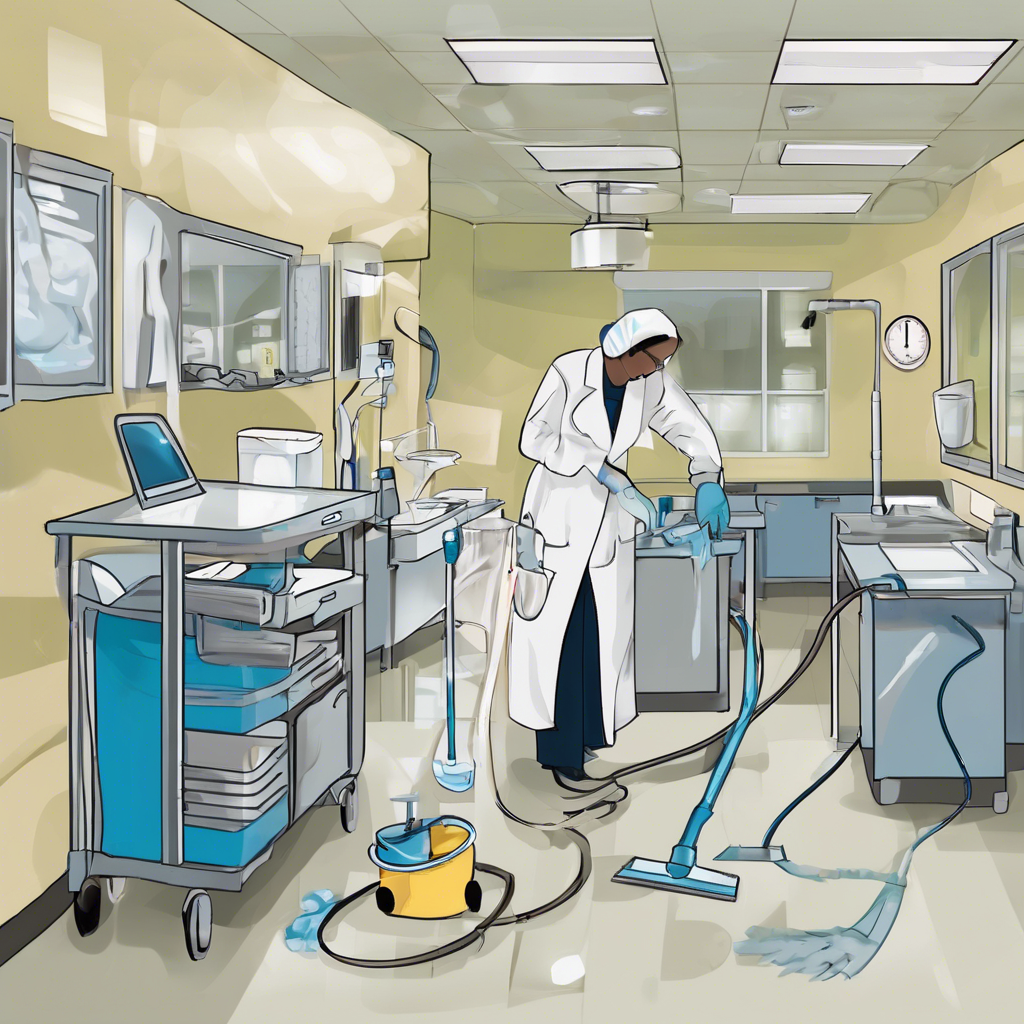The Top Cleaning Challenges in Healthcare Facilities 🏥
Maintaining a pristine environment in healthcare facilities is paramount, not just for patient comfort, but for infection control and overall patient safety. However, the unique demands of hospitals, clinics, and other healthcare settings present a complex array of cleaning challenges far beyond those found in typical commercial spaces. From stringent infection control protocols to the sheer volume of potentially contaminated surfaces, the stakes are incredibly high. This article delves into the most pressing cleaning hurdles faced by healthcare facilities and explores potential solutions.
The Centers for Disease Control and Prevention (CDC) estimates that healthcare-associated infections (HAIs) affect millions of patients annually, underscoring the critical role of effective cleaning and disinfection.
1. The Persistent Threat of HAIs:
Healthcare-associated infections (HAIs) represent the most significant cleaning challenge. These infections, contracted during a hospital stay, can range from minor skin infections to life-threatening conditions like sepsis. The spread of HAIs is facilitated by the presence of various pathogens on surfaces, equipment, and even in the air. Effective cleaning and disinfection protocols, including meticulous hand hygiene practices among staff, are vital in mitigating this risk. The use of appropriate disinfectants, proven effective against specific pathogens, is also critical. Data from the CDC shows that Clostridium difficile (C. diff) and methicillin-resistant Staphylococcus aureus (MRSA) remain leading causes of HAIs, demanding rigorous cleaning strategies.
2. Specialized Cleaning Protocols and Training:
Cleaning healthcare facilities requires specialized knowledge and training. Staff must be adept at using various cleaning agents and equipment while adhering to strict protocols designed to prevent cross-contamination. This includes understanding the differences between cleaning, disinfection, and sterilization, and employing the correct methods for each. Regular training sessions, supplemented by ongoing professional development opportunities, are crucial for maintaining a high standard of cleanliness and mitigating the risk of HAIs. Lack of proper training, or inconsistent adherence to protocols, remains a major contributing factor to HAIs. 📈
3. Managing High Patient Turnover and Waste:
Healthcare facilities experience a constant flow of patients, leading to a significant volume of waste and contaminated materials. This includes used linens, medical equipment, and potentially infectious waste. Effective waste management protocols are crucial for maintaining hygiene and preventing the spread of infections. This also includes proper handling and disposal of sharps, which pose a particular risk to staff. Efficient waste disposal systems, along with dedicated personnel for waste management, are necessary to cope with this challenge. 🗑️
4. The Difficulty of Cleaning Complex Medical Equipment:
Modern medical equipment is often intricate and difficult to clean. Many devices have numerous crevices and components that are challenging to access and sanitize thoroughly. This necessitates specialized cleaning tools and techniques, along with a thorough understanding of the equipment’s functionalities to avoid damage. Improper cleaning of medical equipment can not only lead to HAIs but also compromise the equipment’s performance. Manufacturers’ guidelines should always be followed meticulously. 🔬
5. Budgetary Constraints and Staffing Shortages:
Effective cleaning requires adequate funding and staffing. Budgetary constraints often force facilities to compromise on the quality of cleaning supplies and personnel, potentially increasing the risk of HAIs. Staffing shortages can lead to overworked cleaning crews and a compromised ability to maintain optimal hygiene standards. Adequate funding is critical for procuring high-quality cleaning agents, equipment, and providing ongoing staff training. The impact of these constraints is directly proportional to the risk of HAIs. 💰
6. Emerging Infectious Diseases:
The emergence of novel pathogens, such as the recent COVID-19 pandemic, presents ever-evolving cleaning challenges. These events demand rapid adaptation of cleaning protocols and the adoption of new technologies and strategies to combat emerging threats. Constant vigilance, continuous monitoring of infectious disease outbreaks, and flexible responses are necessary to maintain a safe and healthy environment. 🦠
Looking Ahead: Innovative Solutions
Addressing these cleaning challenges requires a multi-faceted approach involving improved training, investment in advanced cleaning technologies (like UV-C disinfection robots), and robust infection control protocols. Furthermore, utilizing data-driven approaches to monitor cleaning effectiveness and identify areas needing improvement can significantly enhance hygiene standards. The health and safety of patients and staff hinge on a resolute commitment to effective cleaning and disinfection in healthcare facilities.
